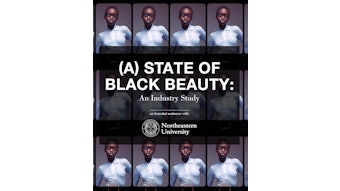The beauty industry has been uprooted by supply challenges over the last two years and the current outlook shows no signs of abating.
Featured: NYSCC Suppliers' Day Focuses on Digital Age of Beauty
Supply chain professional Tony Hoth of The Complete Package discusses the state of the supply chain with supply chain and what companies can do to mitigate risk and manage operational flexibility. Briefly, Shannon Hess of Burt's Bees discusses these supply chain issues from a brand perspective.
- Shannon Hess (The Clorox Co./Burt’s Bees director of responsible sourcing, health and beauty): Addressed supply chain overview, cosmetic brand practical steps risk mitigation and best practice.
- Tony Hoth (supply chain consultant of The Complete Package): Addressed a supply chain overview, and practical steps for planning and risk mitigation.
Provided is the latest on how labor challenges, geopolitical instability, COVID-19 and demand expectations are affecting brands, manufacturing and freight movement in the industry.
Burt's Bees
Hess explained: “[In addition to supply chain disruptions] we’re also seeing withhold release orders, which is a legal way to stop the infiltration of goods—that there’s a legitimate suspicion of forced labor in the supply chain. Malaysia is subject to these withhold release orders on palm derivatives. On Friday last week or about a week in a half ago, Indonesia also announced they’re banning the export of palm oil as of Monday (May 2, 2022)."
"The derivatives were not impacted by that if they were manufactured in Indonesia but this was in response to the restraint on sunflower oil in order to protect the cooking oil market in Indonesia. There’s a lot of things you may not think can cause material supply chain disruptions but they really have a widespread impact.”
The Complete Package
Hoth addresses the recent changes in business in China due to the rising COVID-19 cases in Shanghai and the supply chain issues that come with it:
“In order for a factory in Shanghai to go back into business today to start producing, they have to file a plan with the government. The plan is basically the business has to list all employees that are available to come back to that factory. The second thing they have to do is they have to be able to prove to the government that they can provide enough dormitory services for the people who are going to live at that factory [for work] for a period of time. The third thing they have to do is they have to do COVID tests every single day on every single employee.”
Featured: Cosmetic Claims Put to the Test at NYSCC Suppliers' Day
“Clearly, not every single factory has dormitories. So, you have a human element—you have people who are quarantined in their homes, they can’t get to work even if they wanted to get to work; you have factories that don’t have enough dormitory space for people. You have people literally living on factory floors on mats. In those factories, even if they wanted to run 100% capacity—if they could get all their employees back, they can’t hit 100% capacity.”
“Last week, they were bottlenecked. Within China, there are about 340 container vessels that were bottlenecked. They were either trying to get loaded and get moved out to their next port of call, or they were in China and they were trying to get offloaded. Now we have another problem in China, if they acquired some employees, unfortunately, they don’t have either the components or the raw materials to build a product for a long period of time.”
“The next problem they have are truckers. Truckers are basically picking and choosing the routes they want to travel, and there’s a reason for that. If they travel along certain routes, they get stopped every so many miles and they have to prove that their COVID vaccinations are up to date or they have to take COVID tests in the route. Truckers have decided they no longer want to go out [because of this]. Even if a factory was approved to go back to work, they just don’t have the raw materials and they might not have labor. The last thing is, if they can make it, now they can’t move it. A lot of factories in China don’t have warehouse space. When they produce [materials], they need to get product moving right away, otherwise, they’re just bottlenecking.”
“The last thing we have in Shanghai is we still have a large number of people under quarantine. Factory capacity. . . is probably operating at less than 40% capacity. It’s people, supplies and output. They just don’t have enough of any of those things.”










